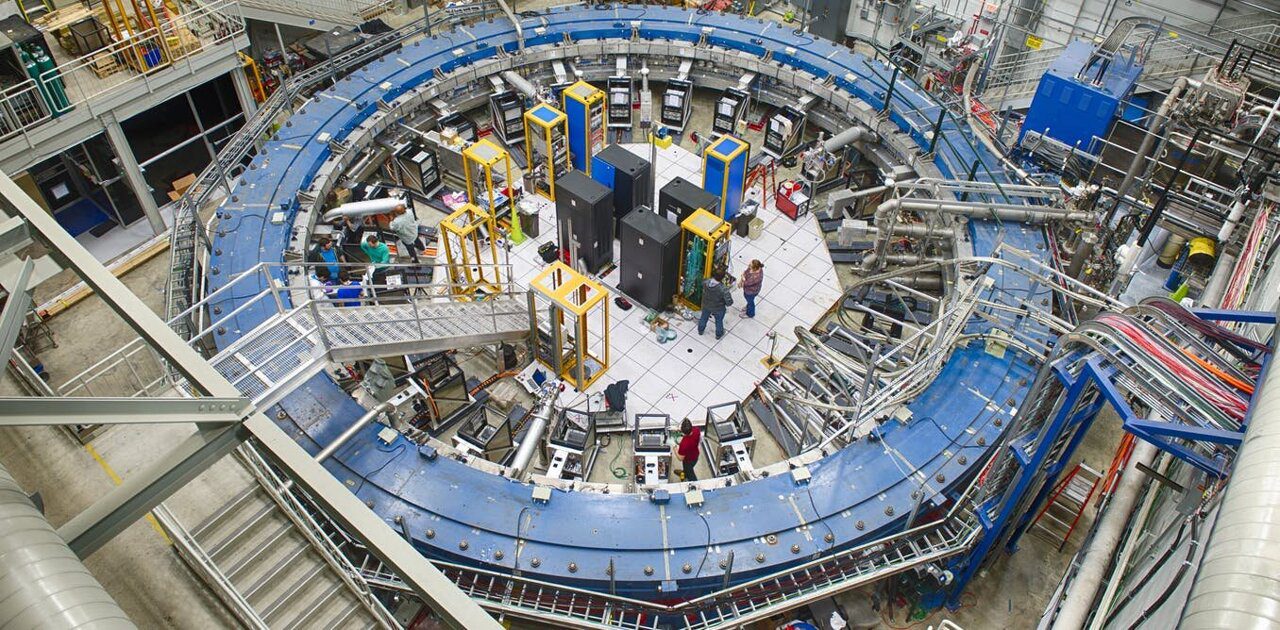An interdisciplinary group of scientists led by physicists of Boston College revealed yesterday that they have found the mass-defining Higgs Boson particle’s magnetic relative, the axial Higgs mode, a hitherto undetected quantum excitation. The team’s findings were published in the online issue of yesterday’s journal Nature (June 8, 2022).
The finding of the long-sought Higgs Boson revolutionized our understanding of mass. As per Kenneth Burch, a key co-author of the “Axial Higgs Mode Identified by Quantum Pathway hindrance in RTe3” article, the mode of axial Higgs has a magnetic moment, To explain its characteristics, a more complex form of the theory is required.
As per Burch, theories that predicted the existence of such a stage have been used to describe “dark matter,” the almost invisible substance that makes up a large part of the universe but can only be observed by gravity.
Instead of the Higgs Boson, which has been found by tests in a large particle collider, the researchers focused on RTe3, or infrequent telluride, a very well quantum component that can be explored in a “tabletop” at room temperature test design.
Burch stated, “It’s not often that you find a new element sitting on the countertop.”
Burch claims that RTe3 shares characteristics with the hypothesis that generates the axial Higgs phase. He pointed out that the primary problem in identifying Higgs particles, in general, is their weak correlation to experimental probes such as light beams. Similarly, revealing the sensitive quantum properties of particles typically involves complex experimental setups using enormous magnets and strong lasers, and also freezing materials to extremely low temperatures.
The team believes to have surmounted these challenges by using a new approach to light scattering and determining the correct quantum simulator, which is basically a material that duplicates the features needed for the study.
The research focuses on a molecule that has long been recognized to get a “charge density waveform,” or a phase in which electrons identity with a uniform density in space, according to Burch.
He went on to suggest that aspects of the mainstream interpretation of particle physics are similar to the fundamental idea of this wave. The charge density wave, on the other hand, is unusual in this case since it exists well beyond room temperature and contains modulation of both atomic orbits and charge density. This allows the Higgs Boson to have additional properties, such as being axial or possessing angular momentum, when linked with this charge density pulse.
Burch added that the scientists employed light scattering to expose the nuanced structure of this mode, in which a laser is focused on the substance and can alter hue and polarisation. The polarization is sensitive to the symmetry elements of the particle, whereas the color shift is caused by the light-producing Higgs Boson inside the material.
Furthermore, the particle might be produced with varied components – such as one pointing up or one without magnetism by carefully selecting the incident and exiting polarisation. They leveraged the fact that these elements cancel in one configuration, which is a fundamental property of quantum physics. They do, however, add a distinct setup.
Burch explained, “As a result, we were able to uncover the concealed magnetic component as well as establish the finding of the first axial Higgs mode.”
“In high-energy particle physics, the observation of the axial Higgs was expected to explain dark matter,” Burch added. “However, no one has ever noticed it.” Its emergence in such a condensed matter system was unexpected, and it announces the discovery of a hitherto unknown broken symmetry condition. Unlike the severe circumstances usually necessary to discover new particles, this was carried out at room temperature in a tabletop test where we simply changed the polarization of light to establish quantum control of the mode.”
According to Burch, the team’s allegedly basic and available research methodologies can be used to study other domains.
“Many of these tests were carried out in my lab by an undergraduate,” Burch stated. “The method can be easily applied to the quantum characteristics of a wide range of collective phenomena, such as superconducting modes, ferroelectrics, magnets, and charge density waves.” Furthermore, we overcome the problem of extreme test conditions by bringing the research of quantum interference in elements with associated and/or topological stages to normal temperature.
Burch was joined on the report by recent Ph.D. graduate Yiping Wang, undergraduate student Grant McNamara, and post-doctoral researcher from Boston College Md Mofazzel Hosen. According to Burch, Wang won the American Physical Society’s Best Thesis in Magnetism in part because of her work on the project.
Scientists from BC, Princeton University, Harvard University, the University of Washington, the University of Massachusetts, Yale University, Amherst, and the Chinese Academy of Sciences all contributed, according to Burch.
Burch remarked, “This demonstrates the power of interdisciplinary work in uncovering and managing new occurrences.” “It’s not every day that you find a paper that combines optics, physical theory, chemistry, materials science, and physics.”
